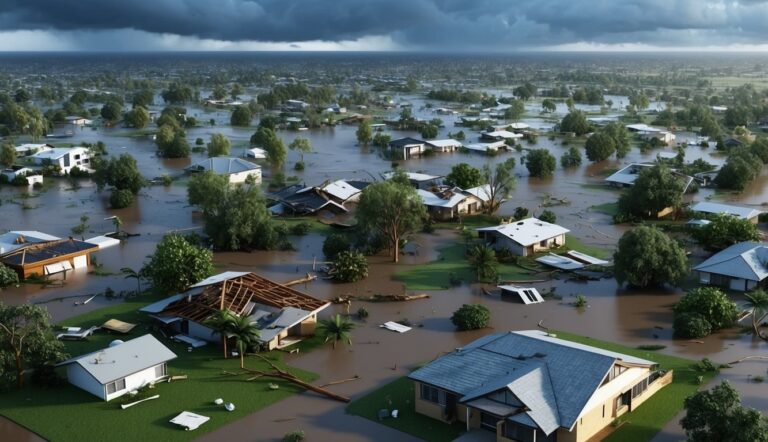Technological Advancements in P&C Insurance
As the landscape of property and casualty (P&C) insurance evolves, Digital Insurance consulted industry experts to uncover forthcoming trends and shifts projected for 2025.
One prominent expectation is the heightened integration of digital technology, especially artificial intelligence (AI), within the P&C sector.
This shift reflects a broader move by companies to focus on enriching customer experiences.
At the same time, the impact of climate change looms large, with the increased frequency and severity of natural disasters emerging as a critical concern for the industry.
- Belen Tokarski, President and COO at Mylo – Tokarski emphasizes the urgent need for insurance companies to improve consumer education, as a significant disconnect exists between clients and carriers.
There are signs that conditions may soften eventually, but many consumers are unaware of the reasons behind rising insurance costs.
- Meredith Brogan, President at Crawford Network Solutions – Brogan anticipates that predictive modeling will gain traction, particularly in managing flood risks.
The industry will leverage advanced analytics and AI to analyze climate trends, enabling property owners to proactively mitigate risks.
- Ian Drysdale, CEO of One Inc – The payment landscape in insurance is set for significant transformation, with digital transactions anticipated to grow by 82% globally from 2020 to 2025.
- Bill Pieroni, CEO of ACORD – Pieroni believes the hard market may begin to ease over time but will continue to affect various lines of business, fueling demand for innovative, AI-enhanced modeling solutions.
- Garret Gray, President of Global Insurance Solutions at CoreLogic – Gray stresses the importance of collaboration among insurtech companies in solving challenges related to property and restoration sectors to improve customer experiences.
- Nakita Devlin, CEO and Founder of RIC – Devlin notes parametric insurance is on the brink of significant growth, with innovative insurtech startups making these products both accessible and affordable.
- Troy Crawford, Head of Commercial Lines Product Management at Westfield – Crawford predicts stricter underwriting standards for wind and hail damage within commercial property insurance.
- Geoffrey Lehv, VP and Head of North American Accounts at KWH Analytics – Lehv points to the growing need for documented resilience strategies against natural disasters, and firms demonstrating these measures can expect favorable insurance rates.
- Coleman Johnson, SVP and Chief Underwriting Officer at The Mutual Group – Johnson foresees stability in the commercial property market, although liability rates might face upward pressure due to social inflation.
- Ken Hugendubler, Principal at Baker Tilly – Hugendubler predicts an increase in mergers and acquisitions, with mid-size carriers drawing interest from private equity.
- Charlie Sidoti, Executive Director at Innsure – Sidoti highlights the rise in protection gaps stemming from extreme weather events, urging communities to explore alternative insurance solutions.
- Katie McGrath, CEO of North America at Swiss Re Corporate Solutions – McGrath emphasizes the critical role of risk mitigation in navigating climate change.
- Francois Ramette, Principal at PwC’s Insurance Advisory Practice – Ramette notes a potential softening in P&C pricing that began in 2024, albeit complicated by rising inflation.
- Brian Patillo, EVP at Goosehead Insurance – Patillo suggests that as housing markets stabilize in 2025, homeowners will reassess their insurance expenditures.
- Lauren Menuey, Managing Director at Goosehead Insurance – Menuey foresees a departure from traditional bundling practices for home and auto insurance, particularly in higher-risk states.
- Eric Benedict, Senior Associate at Clyde & Co, Atlanta – Benedict expects substantial statutory reforms in hurricane-prone areas following severe storms, potentially leading to a decrease in lawsuits against insurers.
- Vasu Srinivasan, Global Insurance Practice Leader for Claims at Genpact – Srinivasan believes personal insurance profitability could improve, aided by a stable economic backdrop.
- Rory Yates, SVP Corporate Strategy and Global at EIS – Yates notes that property insurance premiums will likely see moderate increases, while challenges associated with underinsurance and rising policyholder turnover will endure.
Impact of Climate Change and Risk Management
Several leaders underline the importance of incorporating climate risk into insurance strategies, highlighting the need for a deeper understanding of risk exposure and effective risk management strategies.
They emphasize collaboration within the industry to enhance operational efficiency and customer experience.
Moreover, there is a consensus that the insurance sector must adapt to the evolving climate landscape to remain viable and competitive.
As innovative solutions such as parametric insurance and digital integrations become more prevalent, the sector must engage actively to ensure these offerings meet changing consumer needs.
Future Trends in the Insurance Landscape
In conclusion, the property and casualty insurance sector is bracing for a range of pivotal changes in 2025.
These transformations will unfold in response to technological advancements, climate realities, and evolving market dynamics.
Source: Dig-in






